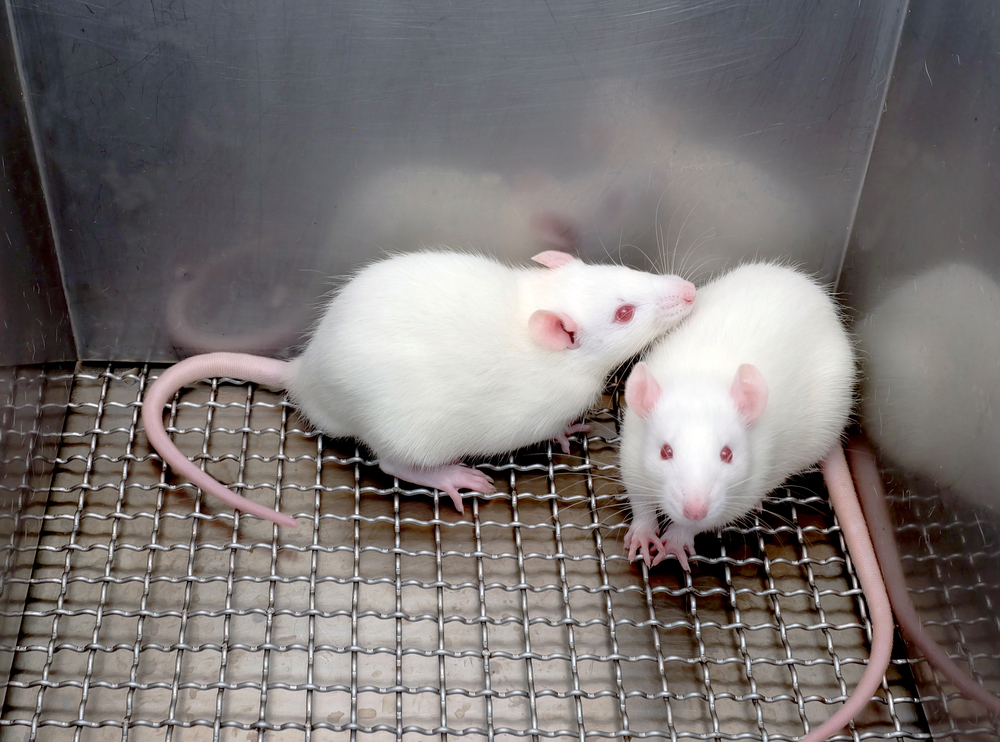Genetic Therapy Restores Motor Neurons in SMA Model
Written by |

Researchers from The Jackson Laboratory in Maine, in collaboration with Isis Pharmaceuticals, tested a novel therapeutic candidate (antisense oligonucleotides) in genetically engineered mice with spinal muscular atrophy (SMA), observing it could restore some functionality of motor neurons. The study entitled “Systemic, postsymptomatic antisense oligonucleotide rescues motor unit maturation delay in a new mouse model for type II/III spinal muscular atrophy” was published in Proceedings of the National Academy of Sciences journal.
Spinal muscular atrophy is a genetic disorder characterized by the loss of motor neurons’ functionality, leading to progressive muscle wasting and mobility impairment. SMA comes in various degrees of severity (I, II, III, and IV) that share common symptoms; however, life expectancy increases from type I (severe, often neonatal, disease onset) to IV (milder, usually adult onset). Patients with SMA may suffer symptoms that greatly vary depending on the type of SMA involved, and the stage of the disease. Common symptoms include the absence of reflexes, muscle weakness, difficulty in sitting/standing/walking, respiratory distress, and weight loss, among others. SMA has no known cure, but several therapies based on various care strategies like nutrition, respiratory, and mental health are available to ease symptoms.
Researchers believe SMA is caused by a genetic mutation in what is known as survival motor neuron 1 (SMN1) protein gene, where reduced levels of this protein induce loss of functionality of neuronal cells. On the other hand, some studies suggest that SMN2 gene conversion provides some protection by inducing proteins that function like SMN1. In turn, this could be used as a means of SMA prognosis, depending on the number of SMN2 copies. Earlier SMA onset could yield two or fewer copies of the SMN2 gene and more severe stages may yield three or more copies.
Mice models of SMA are generally challenging because even lower levels of mutations lead to premature death. This renders clinical studies with mice complicated because the symptoms can not be associated with severity of the disease. However, it is hypothesized that if SMN protein levels have increased even just by a small amount, it would extend the animals’ lifetime and allow for therapy testing.
With this goal in mind, researchers from The Jackson Laboratory and Isis Pharmaceuticals created a genetically engineered mouse to improve the ability to model SMA. Researchers added human SMN2 copies, resulting in genetically engineered mice with mild SMA and longer lifetime expectancy. Afterward, the new mice model, named “Burgheron,” was tested with antisense oligonucleotide therapy.
The results suggested that antisense oligonucleotide restored SMN levels in Burgheron mice and extended their life expectancy. The latter occurred even if the therapy was administrated 25 days after the symptoms had initiated. Most preclinical data with type I animal models suggests that earlier therapeutic intervention of SMA is required. On the other hand, preclinical data with type II/III patients (majority of patients living with SMA) are not yet available to understand if earlier intervention is required for a full effect. In human patients, antisense oligonucleotides therapy is generally administered through direct contact with the central nervous system (CNS). However, in this mice model the therapy could be administrated via peripheral application.
These findings suggest that antisense oligonucleotide therapy was effective in the mice models even after SMA symptoms had started several weeks earlier. Importantly, the administration mode did not require direct injection into the central nervous system. However, only future clinical trials would determine whether peripheral application of the therapy would work for humans. “The benefit may not be restricted to CNS delivery, which opens up a whole new potential class of compounds and possibilities for combination therapies. Further study in humans will be needed, but the prospect of non-CNS delivery is of significant potential benefit for patients,” the authors wrote in their report.






